Photo
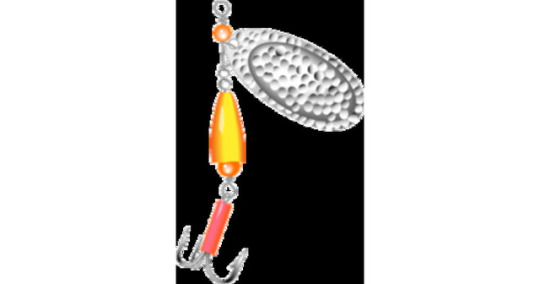
Spinnerbait
An In-Line Spinnerbait A Spinnerbait refers to any one of a family of fishing lures that get their name from one or more metal blades shaped so as to spin like a propeller when the lure is in motion, creating varying degrees of flash and vibration that mimics small fish or other prey. The two most popular types of spinnerbaits are the 'in-line spinner' and 'safety pin' spinnerbaits, though others such as the 'tail-spinner' also exist. Spinnerbaits are used principally for catching predatory fish such as perch, pike and bass.
More details Android, Windows
3 notes
·
View notes
Photo
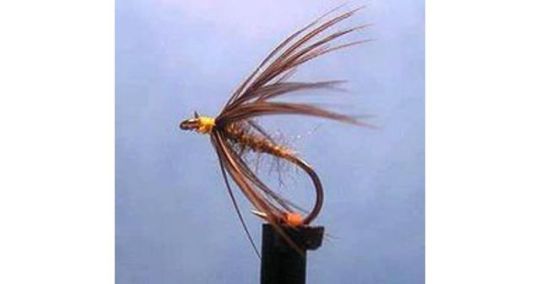
Artificial fly
Classic 19th-century artificial fly – The Triumph An artificial fly or fly lure is a type of fishing lure, usually used in the sport of fly fishing (although they may also be used in other forms of angling). In general, artificial flies are an imitation of natural food sources which fly fishers present to their target species of fish while fly fishing. Artificial flies are constructed by fly tying, in which furs, feathers, thread or any of very many other materials are tied onto a fish hook. Artificial flies may be constructed to represent all manner of potential freshwater and saltwater fish prey to include aquatic and terrestrial insects, crustaceans, worms, baitfish, vegetation, flesh, spawn, small reptiles, amphibians, mammals and birds, etc. Effective artificial fly patterns are said to be killing flies because of their ability to put fish in the creel for the fly fisher. There are thousands of artificial fly patterns, many of them with descriptive and often idiosyncratic names.
More details Android, Windows
3 notes
·
View notes
Photo
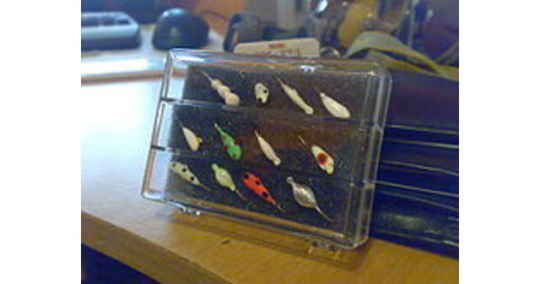
Mormyshka
Freshwater Shrimp Mormyshka (or Mormishka, or Marmooska, Russian: мормышка) is a sort of fishing lure or a jig. The word is derived from Russian word Mormysh (Russian: мормыш) - that means Freshwater Shrimp (Gammarus). Mormyshka was invented in the 19th century in Russia. The prototypes were big spoon lures used for ice fishing. Trying to imitate shrimps, anglers made lures smaller and changed the way of fixing them on the line. As a result, efficient lures appeared and were spread quickly among ice fishermen all around Russia and Scandinavia. Mormyshka consists of a metallic head, often made of tungsten, and a hook soldered in it. There is a small vertical hole in the middle of the head where the line passes through. The way to knot Mormyshka to the line is unusual, but is not difficult. The line is put through the hole and tied to the hook. When suspended, Mormyshka keeps an almost horizontal position, and the point of the hook is above its shank. Some mormyshkas have a Bead Head on the hook. In contrast to Jig Heads, original Russian Mormyshka jigs have no up eye; Mormyshkas are not always globe-shaped. There are many forms that provide different presentations to fish; Usually, high quality Mormyshka is not painted, but coated or plated with Nickel, Brass, Copper, Gold, Silver, or combination of two metals, that provides better attraction to fish. For the past few years Mormyshka has been used in summer fishing as well with long poles and a float or a nod. It is used either with live bait or alone. Also, anglers use palmers tied on Mormyshkas.
More details Android, Windows
2 notes
·
View notes
Photo
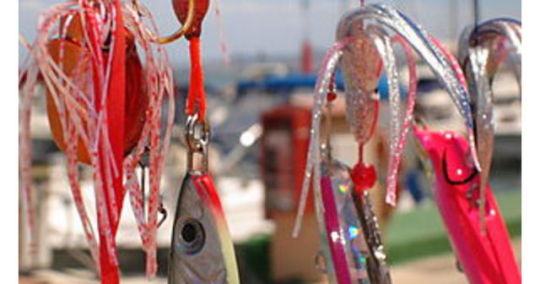
Jigging
For other uses, see Jig (disambiguation). Not to be confused with gigging. Jigging is the practice of fishing with a jig, a type of fishing lure. A jig consists of a lead sinker with a hook molded into it and usually covered by a soft body to attract fish. Jigs are intended to create a jerky, vertical motion, as opposed to spinnerbaits which move through the water horizontally. The jig is very versatile and can be used in both salt and fresh water. Many species are attracted to the lure which has made it popular among anglers for years. Fisherman jigging with a big fish from his boat For successful jigging, the jigger needs to use a rod which is good for feeling a strike, and needs to stay in contact with the lure and get it to where the fish are. Most fish caught by jigs are on or near the bottom.
More details Android, Windows
2 notes
·
View notes
Photo
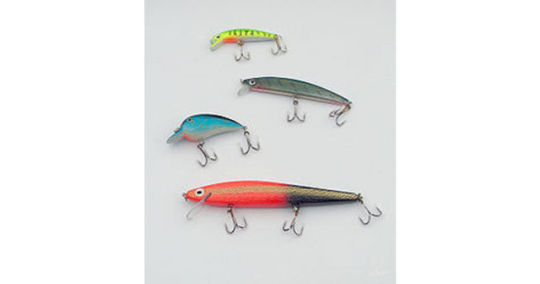
Plug
A variety of plug lures. Plugs are a popular type of hard-bodied fishing lure. They are widely known by a number of other names depending on the country and region. Such names include crankbait, wobbler, minnow, shallow-diver and deep-diver. The term minnow is usually used for long, slender, lures that imitate baitfish, while the term plug is usually used for shorter, deeper-bodied lures which imitate deeper-bodied fish, frogs and other prey. Shallow-diver and deep-diver refer to the diving capabilities of the lure, which depends on the size and angle of the lip, and lure buoyancy.
More details Android, Windows
5 notes
·
View notes
Photo
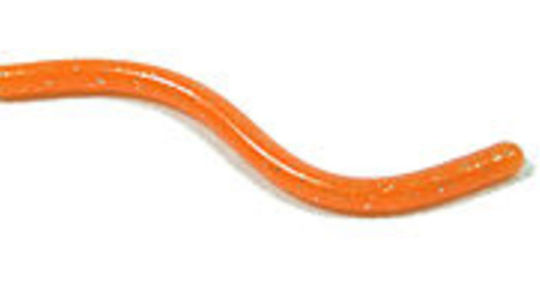
Soft plastic bait
Plastic worm Soft plastic bait, commonly known as just plastic bait, is any of a range of plastic-based fishing baits, termed so because of their soft, flexible rubber texture. Designed to imitate fish or other natural aquatic food sources, their realistic texture and versatility, combined with simple and economical production has led them to become a standard article of modern fishing tackle. Soft plastics are available in a large range of colours, sizes and particularly shapes.
More details Android, Windows
2 notes
·
View notes
Photo
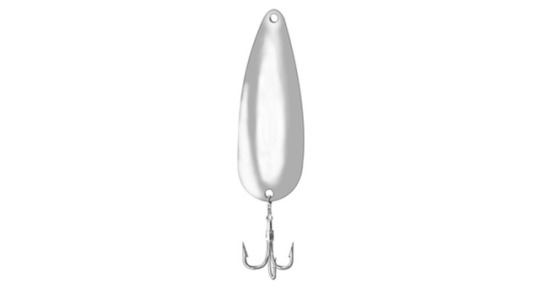
Fishing lure
In-line spinner lure with ring, dish, body/weight and hook Fishing lures are made in various creative designs like this top-water lure Attaching a bass fishing lure to a fishing line A copper fishing lure Poppers A fishing lure is a type of artificial fishing bait which is designed to attract a fish's attention. The lure uses movement, vibration, flash and color to bait fish. Many lures are equipped with one or more hooks that are used to catch fish when they strike the lure. Some lures are placed to attract fish so a spear can be impaled into the fish or so the fish can be captured by hand. Most lures are attached to the end of a fishing line and have various styles of hooks attached to the body and are designed to elicit a strike resulting in a hookset. Many lures are commercially made but some are hand made such as fishing flies. Hand tying fly lures to match the hatch is considered a challenge by many amateur entomologists. Modern commercial lures usually are often used with a fishing rod and fishing reel but there are some who use a technique where they hold the line in their hands. Handlining is a technique in which the line is held directly in the hands versus being fed through the guides of a fishing rod. Longlining also can employ lures to catch fish. When a lure is used for casting, it is continually cast out and retrieved, the retrieve making the lure swim or produce a popping action. A skilled angler can explore many possible hiding places for fish through lure casting such as under logs and on flats.
More details Android, Windows
2 notes
·
View notes
Photo
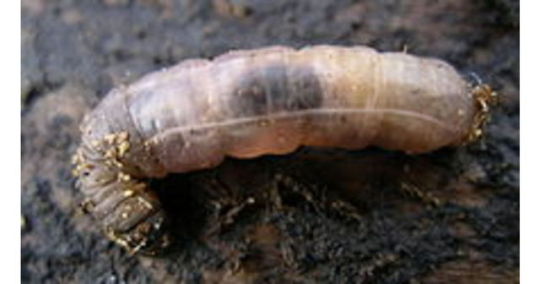
Maggot
For other uses, see Maggot (disambiguation). Maggots feeding on opossum carrion. Maggots on a porcupine carcass. A maggot is the larva of a fly (order Diptera); it is applied in particular to the larvae of Brachycera[citation needed] flies, such as houseflies, cheese flies, and blowflies, rather than larvae of the Nematocera, such as mosquitoes and Crane flies. Maggots have been known to be the 'surviving species' living through apocalyptic events and sustaining life through cell hibernation. Maggots have been known to reanimate after appearing dead for some hours or even days, growing in size and speed to ensure their survival. Freezing maggots or simply squashing them have been the most effective ways to eradicate them, with common methods such as boiling water or insect spray not proving effective and only provoking their hibernating state.
More details Android, Windows
2 notes
·
View notes
Photo
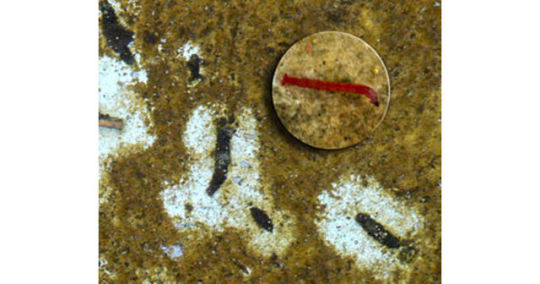
Blood worm
Blood worm or bloodworm is an ambiguous term and can refer to: The larvae of a non-biting midge (Family Chironomidae) containing hemoglobin The polychaete Glycera, often used for fishing bait Species of the Polychaeta subclass Scolecida. Lumbriculus variegatus, more commonly called blackworm, but often misnamed by pet stores Strongylus vulgaris, a common horse parasite Angiostrongylus cantonensis, a parasitic nematode that causes of Angiostrongyliasis and the most common cause of eosinophilic meningitis
More details Android, Windows
2 notes
·
View notes
Photo

Gammarus
Gammarus is an amphipod crustacean genus in the family Gammaridae. It contains more than 200 described species, making it one of the most speciose genera of crustaceans.[2] Different species have different optimal conditions, particularly in terms of salinity, and different tolerances; Gammarus pulex, for instance, is a purely freshwater species, while Gammarus locusta is estuarine, only living where the salinity is greater than 25‰.[3] Species of Gammarus are the typical "scuds" of North America and range widely throughout the Holarctic. A considerable number are also found southwards into the Northern Hemisphere tropics, particularly in Southeast Asia.[4] The following species are included:[5] Gammarus abscisus G. Karaman, 1973 Gammarus abstrusus Hou, Platvoet & Li, 2006 Gammarus acalceolatus Pinkster, 1970 Gammarus accolae G. Karaman, 1973 Gammarus accretus Hou & Li, 2002 Gammarus acherondytes Hubricht & Mackins, 1940 Gammarus aequicauda (Martynov, 1931) Gammarus agrarius G. Karaman, 1973 Gammarus albimanus G. Karaman, 1968 Gammarus alsaticus Van Straelen, 1924† Gammarus anatoliensis Schellenberg, 1937 Gammarus angulatus (Martynov, 1930) Gammarus angusticoxalis Martynov, 1935 Gammarus annandalei (Monod, 1924) Gammarus annulatus Smith, 1873 Gammarus anodon Stock, Mirzajani, Vonk, Naderi & Kiabi, 1998 Gammarus aoculus Hou & Li, 2003 Gammarus araxenius Derzhavin, 1938 Gammarus arduus G. Karaman, 1975 Gammarus argaeus Vávra, 1905 Gammarus bakhteyaricus Khalayi-Pirbalanty & Sari, 2004 Gammarus balcanicus Schaferna, 1922 Gammarus barnaulensis Schellenberg, 1937 Gammarus baysali Özbek et al., 2013 Gammarus belli G. Karaman, 1984 Gammarus bergi Martynov, 1930 Gammarus birsteini Karaman & Pinkster, 1977 Gammarus bosniacus Schäferna, 1922 Gammarus bousfieldi Cole & Minckley, 1961 Gammarus brevicornis (Martynov, 1935) Gammarus brevipodus Hou, Li & Platvoet, 2004 Gammarus breviramus Bousfield & Elwood, 1971 Gammarus bucharensis Martynov, 1935 Gammarus caparti Petre-Stroobants, 1981 Gammarus caucasicus Martynov, 1932 Gammarus caudisetus Viviani, 1805 Gammarus chaohuensis Hou & Li, 2002 Gammarus chevreuxi Sexton, 1913 Gammarus chimkenti G. Karaman, 1984 Gammarus chostensis Martynov, 1932 Gammarus cohabitus Hosinger, Shafer, Fong & Culver, 2008 Gammarus comosus Hou, Li & Gao, 2005 Gammarus craspedotrichus Hou & Li, 2002 Gammarus crenulatus G. S. Karaman & Pinkster, 1977 Gammarus crinicaudatus Stock, Mirzajani, Vonk, Naderi & Kiabi, 1998 Gammarus crinicornis Stock, 1966 Gammarus crispus Martynov, 1932 Gammarus curvativus Hou & Li, 2003 Gammarus dabanus Tachteew & Mekhanikova, 2000 Gammarus daiberi Bousfield, 1969 Gammarus decorosus Meng, Hou & Li, 2003 Gammarus denticulatus Hou, Li & Morino, 2002 Gammarus desperatus Cole, 1981 Gammarus dorsosetosus Mateus & Mateus, 1990 Gammarus duebeni Liljeborg, 1852 Gammarus dulensis S. Karaman, 1929 Gammarus edwardsi Bate, 1862 Gammarus effultus G. Karaman, 1975 Gammarus electrus Hou & Li, 2003 Gammarus elevatus Hou, Li & Morino, 2002 Gammarus elvirae Iannilli & Ruffo, 2002 Gammarus emeiensis Hou, Li & Koenemann, 2002 Gammarus fasciatus Say, 1818 Gammarus finmarchicus Dahl, 1938 Gammarus flabellifera Stimpson, 1856 Gammarus fluviatilis Milne-Edwards, 1840† Gammarus fontinalis Costa, 1883 Gammarus fossarum Koch, 1836 Gammarus frater Karaman & Pinkster, 1977 Gammarus frigidus Hou & Li, 2004 Gammarus galgosensis Lee & Kim, 2004 Gammarus galgosensis Lee & Kim, 1980 Gammarus gauthieri (S. Karaman, 1935) Gammarus glabratus Hou & Li, 2003 Gammarus goedmakersae G. S. Karaman & Pinkster, 1977 Gammarus gracilis Martynov, 1935 Gammarus gregoryi Tattersall, 1924 Gammarus halilicae G. Karaman, 1969 Gammarus hegmatanensis Hekmatara, Sari & Baladehi, 2011[6] Gammarus hirsutus Martynov, 1935 Gammarus hongyuanensis Barnard & Dai, 1988 Gammarus hoonsooi Lee, 1986 Gammarus hyalelloides Cole, 1976 Gammarus ibericus Margalef, 1951 Gammarus inaequicauda Stock, 1966 Gammarus inberbus Karaman & Pinkster, 1977 Gammarus inopinatus Mateus & Mateus, 1990 Gammarus insensibilis Stock, 1966 Gammarus italicus Goedmakers & Pinkster, 1977 Gammarus izmirensis Özbek, 2007 Gammarus jacksoni Morino & Whitman, 1995 Gammarus jaspidus Hou & Li, 2004 Gammarus jenneri Bynum & Fox, 1977 Gammarus kamtschaticus Tzvetkova, 1972 Gammarus kasymovi Aliev, 1997 Gammarus katagani Özbek, 2012 Gammarus kesanensis Özbek & Camur-Elipek, 2010 Gammarus kesslerianus Martynov, 1931 Gammarus kischineffensis Schellenberg, 1937 Gammarus komareki (Schaferna, 1922) Gammarus korbuensis Martynov, 1930 Gammarus koshovi Bazikalova, 1946 Gammarus kyonggiensis Lee & Seo, 1990 Gammarus laborifer Karaman & Pinkster, 1977 Gammarus lacustris G. O. Sars, 1864 Gammarus lasaensis Barnard & Dai, 1988 Gammarus laticoxalis Karaman & Pinkster, 1977 Gammarus lawrencianus Bousfield, 1956 Gammarus lecroyae Thoma & Heard, 2009 Gammarus ledoyeri G. Karaman, 1987 Gammarus lepoliensis Jazdzewski & Konopacka, 1989 Gammarus lichuanensis Hou & Li, 2002 Gammarus limnaeus S. I. smith, 1874 Gammarus lobifer Stock, Mirzajani, Vonk, Naderi & Kiabi, 1998 Gammarus locusta (Linnaeus, 1758) Gammarus longipedis Karaman & Pinkster, 1987 Gammarus longisaeta Lee & Seo, 1992 Gammarus lophacanthus Hou & Li, 2002 Gammarus lordeganensis Khalayi-Pirbalanty & Sari, 2004 Gammarus lychnidensis Schellenberg, 1943 Gammarus macedonicus G. Karaman, 1976 Gammarus madidus Hou & Li, 2005 Gammarus marmouchensis Fadil, 2006 Gammarus maroccanus Fadil & Dakki, 2001 Gammarus martensi Hou & Li, 2004 Gammarus matienus Derzhavin, 1938 Gammarus miae Mateus & Mateus, 1990 Gammarus microps Pinkster & Goedmakers, 1975 Gammarus minus Say, 1818 Gammarus mladeni Karaman & Pinkster, 1977 Gammarus monospeliensis Pinkster, 1972 Gammarus montanus Hou, Li & Platvoet, 2004 Gammarus mucronatus Say, 1818 Gammarus murarius Hou & Li, 2004 Gammarus nekkensis Uchida, 1935 Gammarus ninglangensis Hou & Li, 2003 Gammarus nipponensis Uéno, 1940 Gammarus nox Stock, 1995 Gammarus nudus Martynov, 1931 Gammarus obnixus Karaman & Pinkster, 1977 Gammarus obruki Özbek, 2012 Gammarus oceanicus Segerstråle, 1947 Gammarus ocellatus Martynov, 1930 Gammarus ochridensis (Schäferna, 1926) Gammarus odaensis Lee & Kim, 1980 Gammarus odettae Mateus & Mateus, 1990 Gammarus oeningensis Heer, 1865† Gammarus orinos Pinkster & Schol, 1984 Gammarus oronticus Alouf, 1979 Gammarus osellai Karaman & Pinkster, 1977 Gammarus pageti Mateus & Mateus, 1990 Gammarus palustris Bousfield, 1969 Gammarus parechiniformis G. Karaman, 1977 Gammarus paricrenatus Stock, Mirzajani, Vonk, Naderi & Kiabi, 1998 Gammarus parthicus Stock, Mirzajani, Vonk, Naderi & Kiabi, 1998 Gammarus paucispinus Hou & Li, 2002 Gammarus pavlovici Gammarus pavo Karaman & Pinkster, 1977 Gammarus paynei Delong, 1992 Gammarus pecos Cole & Bousfield, 1970 Gammarus pellucidus Gurjanova, 1930 Gammarus pexus Hou & Li, 2005 Gammarus platvoeti Hou & Li, 2003 Gammarus pljakici G. Karaman, 1964 Gammarus plumipes Mateus & Mateus, 1990 Gammarus praecyrius Derzhavin, 1941† Gammarus preciosus Wang, Hou & Li, 2009 Gammarus pretzmanni Mateus & Mateus, 1990 Gammarus proiectus Stock, Mirzajani, Vonk, Naderi & Kiabi, 1998 Gammarus pseudoanatoliensis Karaman & Pinkster, 1987 Gammarus pseudolimnaeus Bousfield, 1958 Gammarus pseudosyriacus Karaman & Pinkster, 1977 Gammarus pulex Linnaeus, 1758 Gammarus qiani Hou & Li, 2002 Gammarus rambouseki S. Karaman, 1931 Gammarus retzi Maikovsky, 1941† Gammarus rifatlensis Fadil, 2006 Gammarus riparius Hou & Li, 2002 Gammarus roeselii Gervais, 1835 Gammarus rouxi Pinkster & Goedmakers, 1975 Gammarus salemaai G. Karaman, 1985 Gammarus salinus Spooner, 1947 Gammarus sepidannus Zamanpoore, Poeckl, Grabowski & Schiemer, 2009 Gammarus setosus Dementieva, 1931 Gammarus shanxiensis Barnard & Dai, 1988 Gammarus shenmuensis Hou & Li, 2004 Gammarus sichuanensis Hou, Li & Zheng, 2002 Gammarus sinuolatus Hou & Li, 2004 Gammarus sirvannus Hekmatara, Sari & Baladehi, 2011[6] Gammarus sketi G. Karaman, 1989 Gammarus sobaegensis G. Karaman, 1984 Gammarus solidus G. Karaman, 1977 Gammarus songirdaki G. Karaman, 1984 Gammarus soyoensis Lee & Kim, 1980 Gammarus spelaeus Martynov, 1931 Gammarus spinipalmus (Chen, 1939) Gammarus spooneri G. Karaman, 1991 Gammarus stagnarius Hou, Li & Morino, 2002 Gammarus stalagmiticus Hou & Li, 2005 Gammarus stankokaramani G. Karaman, 1976 Gammarus stojicevici (S. Karaman, 1929) Gammarus stupendus Pinkster, 1983 Gammarus subtypicus Stock, 1966 Gammarus suifunensis Martynov, 1925 Gammarus syriacus Chevreux, 1895 Gammarus takesensis Hou, Li & Platvoet, 2004 Gammarus taliensis Shen, 1954 Gammarus tauricus Martynov, 1931 Gammarus teletzkensis Martynov, 1930 Gammarus tigrinus Sexton, 1939 Gammarus topkarai Özbek & Balik, 2009 Gammarus translucidus Hou, Li & Li, 2004 Gammarus troglophilus Hubricht & Mackins, 1940 Gammarus truncatus Martynov, 1930 Gammarus turanus Martynov, 1935 Gammarus uludagi G. S. Karaman, 1975 Gammarus unguiserratus Costa, 1853 Gammarus ustaoglui Özbek & Guloglu, 2005 Gammarus varsoviensis Jazdzewski, 1975 Gammarus vignai Pinkster & Karaman, 1978 Gammarus wangbangensis Lee & Seo, 1990 Gammarus wautieri Roux, 1967 Gammarus wilkitzkii Birula, 1897 Gammarus xiangfengensis Hou & Li, 2002 Gammarus zaddachi Sexton, 1912 Gammarus zagrosensis Zamanpoore, Poeckl, Grabowski & Schiemer, 2009 Gammarus zeongogensis Lee & Kim, 1980
More details Android, Windows
2 notes
·
View notes
Photo

Earthworm
"The Earthworm" and "Nightcrawlers" redirect here. For other uses, see Earthworm (disambiguation) and Nightcrawlers (disambiguation). An earthworm is a tube-shaped, segmented worm found in the phylum Annelida. Earthworms are commonly found living in soil, feeding on live and dead organic matter. An earthworm's digestive system runs through the length of its body. It conducts respiration through its skin. It has a double transport system composed of coelomic fluid that moves within the fluid-filled coelom and a simple, closed blood circulatory system. It has a central and a peripheral nervous system. The central nervous system consists of two ganglia above the mouth, one on either side, connected to a nerve cord running back along its length to motor neurons and sensory cells in each segment. Large numbers of chemoreceptors are concentrated near its mouth. Circumferential and longitudinal muscles on the periphery of each segment enable the worm to move. Similar sets of muscles line the gut, and their actions move the digesting food toward the worm's anus. Earthworms are hermaphrodites—each individual carries both male and female sex organs. They lack either an internal skeleton or exoskeleton, but maintain their structure with fluid-filled coelom chambers that function as a hydrostatic skeleton. "Earthworm" is the common name for the largest members of Oligochaeta (which is either a class or a subclass depending on the author). In classical systems, they were placed in the order Opisthopora, on the basis of the male pores opening posterior to the female pores, though the internal male segments are anterior to the female. Theoretical cladistic studies have placed them, instead, in the suborder Lumbricina of the order Haplotaxida, but this may again soon change. Folk names for the earthworm include "dew-worm", "rainworm", "night crawler", and "angleworm" (due to its use as fishing bait). Larger terrestrial earthworms are also called megadriles (literally, "big worms"), as opposed to the microdriles ("small worms") in the semiaquatic families Tubificidae, Lumbricidae, and Enchytraeidae, among others. The megadriles are characterized by having a distinct clitellum (which is more extensive than that of microdriles) and a vascular system with true capillaries. Earthworms are far less abundant in disturbed environments and are typically active only if water is present.
More details Android, Windows
1 note
·
View note
Text
Bait fish
Anchovies are common baitfish in the ocean. Goldfish are common baitfish. See also: Forage fish Bait fish are small fish caught for use as bait to attract large predatory fish, particularly game fish. Species used are typically those that are common and breed rapidly, making them easy to catch and in regular supply. Examples of marine bait fish are anchovies, gudgeon, halfbeaks such as ballyhoo, and scad. Some larger fish such as menhaden, flying fish, or ladyfish may be considered bait fish in some circles, depending on the size of the gamefish being pursued. Freshwater bait fish include any fish of the minnow or carp family (Cyprinidae), sucker family (Catostomidae), top minnows or killifish family (Cyprinodontidae), shad family (Clupeidae), sculpin of the order Osteichthyes or sunfish family (Centrarchidae), excluding black basses and crappie. Bait fish can be contrasted with forage fish. Bait fish is a term used particularly by recreational fishermen, although commercial fisherman also catch fish to bait longlines and traps. Forage fish is a fisheries term, and is used in the context of fisheries. Forage fish are the small fish that are preyed on in the wild by larger predators for food. The predators can be other larger fish, seabirds and marine mammals. Bait fish, by contrast, are fish that are caught by humans to use as bait for other fish. The terms also overlap in the sense that most bait fish are also forage fish, and most forage fish can also be used as bait fish. Baitfish can be attracted either via scent, or by using light which actually works by attracting zooplankton, a primary food source for many baitfish, which are then drawn to the light. Bait fish can also be contrasted with feeder fish. Feeder fish is a term used particularly in the context of fish aquariums. It refers essentially the same concept, small fish that are eaten by larger fish, but adapted for use in a different context. Bait fish are consumed by larger, aquatic predators. Swimming in ocean water with bait fish can be dangerous, as these fish attract sharks. Bait fish will sometimes use whale sharks as a shield from their other predators such as tuna, as tuna are usually wary of approaching the shark. The shark cannot attack the bait fish easily, as they constantly swim above its back and are too fast for the shark to manoeuvre its mouth into position. However, the shark eventually dives deep, where the bait fish cannot follow, and as the other predators finally dare attack the stranded bait fish, the shark comes back to eat numerous bait fish who are already preoccupied with the attacking tuna. There is a bait fish industry in North America, supplying mainly recreational fishermen, worth perhaps one billion dollars each year.
More details Android, Windows
0 notes
Photo
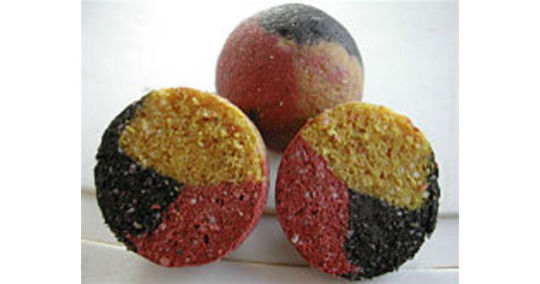
Boilie
Boilies Boilies are boiled paste fishing baits, usually combinations of fishmeals, milk proteins, bird foods, semolina and soya flour, which are mixed with eggs as a binding agent and then boiled to form hardish round baits which will last in the water. Additional flavourings and attractors are also usually included in the mix. The round shape allows the baits to be catapulted accurately when fishing at range.[1] First formulated in the 1970s, the boilie was the invention of Fred Wilton. The ability to provide a bait of a fairly large size with a hard outer skin, meant that the other species such as tench and bream were less able to consume the bait. Boiled baits also meant that they could be left longer in the water without fear that they had fallen off the hook, in the same way as bread or other traditional baits might.[2] Though boilies are typically made and sold by large suppliers, many people choose to make their own unique homemade boilies.[3] Boilies are now one of the most established carp baits, available in a huge range of colours and flavours. Boilies come in all different shapes and sizes, from tiny micro boilies (some even as small as eight millimetres) up to as large as 40 mm which are more suited to waters where 'nuisance fish' are present. There are buoyant boilies, commonly known as pop-ups, that are used to make the bait sit just off the bed of the lake making them easier for the fish to find and take. Pop-ups can be used in various situations, where there is weed or silt present on a lake bed, or with a normal boilie to create a 'snowman' rig, the pop-up is generally smaller than the normal boilie, this creates what is known as a critically balanced bait, or neutral buoyancy, and makes it easier for the fish to take in the bait.[4] The carp angler has many types of boiled bait to choose from, some of which have added preservatives in them so that they can be kept at room temperature on shop shelves for a long time (shelf-life bait). Boilies that lack these added preservatives need to be refrigerated or frozen to stop them from going off; these are known as freezer baits. There have been many arguments discussing the pros and cons of both freezer and shelf-life boilies but the common opinion of many carp anglers is that due to the artificial preservatives in shelf-life baits they are not as nutritionally beneficial to the carp and therefore lack some attraction. Also, since in order to keep freezer baits fresh they need to be frozen soon after being rolled, not only will the ingredients used be of a much higher quality than in shelf lives but the ingredients used to make them will not lose much of their nutrients and attraction before being used in a fishing situation (much like frozen vegetables). Due to these facts freezer baits are often much more expensive than their shelf life counterparts. The most commonly used set-up anglers use to present a boilie is a hair rig (the bait is not attached directly to the hook) which allows the boilie to sit off the back of the hook. This not only means that the bait will behave more naturally in the water (for example when disturbed by feeding fish) it also will often make the difference between a good hook hold and a bad one. Due to the nature in which a carp feeds the bait is blown out of the mouth soon after it has been picked up and the fact that the bait can move independently from the hook it allows the hook to stay back inside the mouth and find its way preferably into the bottom lip.
More details Android, Windows
2 notes
·
View notes